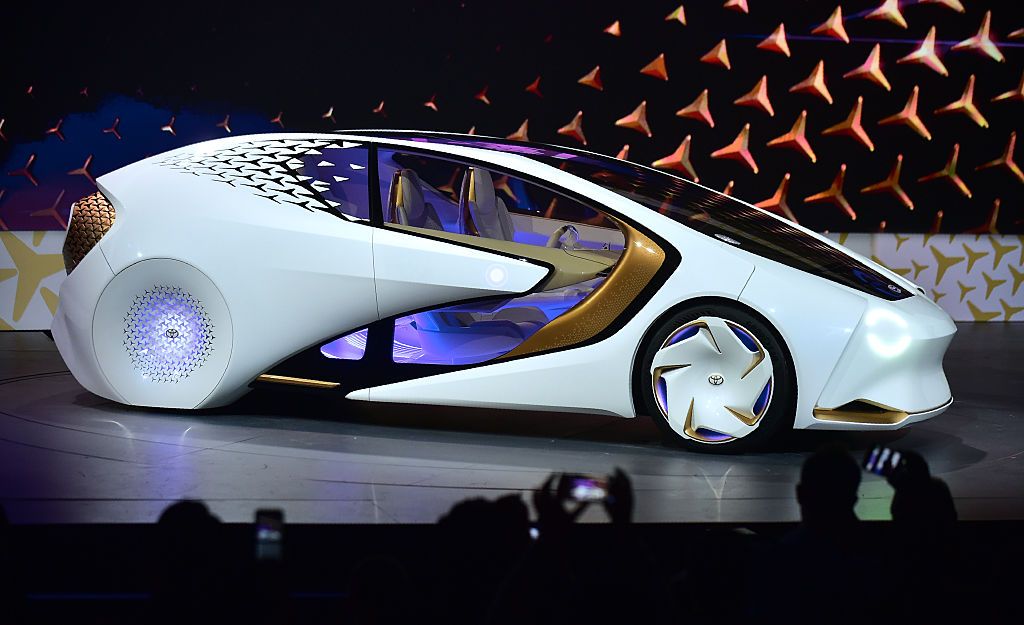For some reasons, hatchback (or five-door) cars have never sold well in America. That feature never bothered me, having owned a 1973 Volkswagen Dasher and a 1984 Civic Hatchback, so I have trouble understanding why it bothered many other car buyers.
Nowadays, crossover SUVs seem to be the hottest market segment in the US, which implies that lift-up back doors are acceptable. Perhaps for that reason and possibly because Honda Civics share the same platform worldwide, Honda is now importing Civic Hatchbacks from England. That last detail makes economic sense. Hatchbacks sell well in Europe, so the production line in Swindon is justified for that reason alone, and additional production sold in American becomes icing on the cake, even if sales here are not huge.
And what of its styling?
The Civic Hatch in this photo has an aggressive design. Note the black spokes on the wheels and the low-profile tires. Then there are those apparent air scoops below the headlights. And of course there is plenty of the current fashion for overdone, angular detailing on body panels and ornamentation.
Zig-zag angularity is especially evident in the zone that includes the C-pillar and taillight assembly. Three distinct angular features here are (1) the sheet metal at the rear of the side window ensemble, (2) the leading part of the taillight assembly, and (3) the rear door aft cut line. All snuggled together along with a door handle and fuel access door to heighten the clutter.
Rear over-decoration is evident in this view. Honda stylists made a strong effort in the area of line-continuation, something almost always helpful in tying design elements together visually. Here the pains they took are overwhelmed by the number of elements they had to deal with. There is simply too much happening. It's too intense. Changes of visual pace are needed here. A place to start might be to disassociate the busy aero-bar running across the backlight from the taillight assemblies.
The front view reveals that those massive air intakes below the headlights, such as can be found on high-performance cars, are bogus. They actually are largely flat panels with raised areas that mimic grilles. If you look closely at the left-hand panel you will see what seems to be a small hole to the right of the running light -- so a little air might get through. The sweep of the headlight assemblies and connecting material is yet another example of an automobile industry styling fad.
The rear has what are supposed to be massive air outlets styled similarly to the faux intakes up front. This photo clearly shows that they are purely decorative, not at all functional. Form follows fad, it seems.
For some reasons, hatchback (or five-door) cars have never sold well in America. That feature never bothered me, having owned a 1973 Volkswagen Dasher and a 1984 Civic Hatchback, so I have trouble understanding why it bothered many other car buyers.
Nowadays, crossover SUVs seem to be the hottest market segment in the US, which implies that lift-up back doors are acceptable. Perhaps for that reason and possibly because Honda Civics share the same platform worldwide, Honda is now importing Civic Hatchbacks from England. That last detail makes economic sense. Hatchbacks sell well in Europe, so the production line in Swindon is justified for that reason alone, and additional production sold in American becomes icing on the cake, even if sales here are not huge.
And what of its styling?
The Civic Hatch in this photo has an aggressive design. Note the black spokes on the wheels and the low-profile tires. Then there are those apparent air scoops below the headlights. And of course there is plenty of the current fashion for overdone, angular detailing on body panels and ornamentation.
Zig-zag angularity is especially evident in the zone that includes the C-pillar and taillight assembly. Three distinct angular features here are (1) the sheet metal at the rear of the side window ensemble, (2) the leading part of the taillight assembly, and (3) the rear door aft cut line. All snuggled together along with a door handle and fuel access door to heighten the clutter.
Rear over-decoration is evident in this view. Honda stylists made a strong effort in the area of line-continuation, something almost always helpful in tying design elements together visually. Here the pains they took are overwhelmed by the number of elements they had to deal with. There is simply too much happening. It's too intense. Changes of visual pace are needed here. A place to start might be to disassociate the busy aero-bar running across the backlight from the taillight assemblies.
The front view reveals that those massive air intakes below the headlights, such as can be found on high-performance cars, are bogus. They actually are largely flat panels with raised areas that mimic grilles. If you look closely at the left-hand panel you will see what seems to be a small hole to the right of the running light -- so a little air might get through. The sweep of the headlight assemblies and connecting material is yet another example of an automobile industry styling fad.
The rear has what are supposed to be massive air outlets styled similarly to the faux intakes up front. This photo clearly shows that they are purely decorative, not at all functional. Form follows fad, it seems.

















EmoticonEmoticon